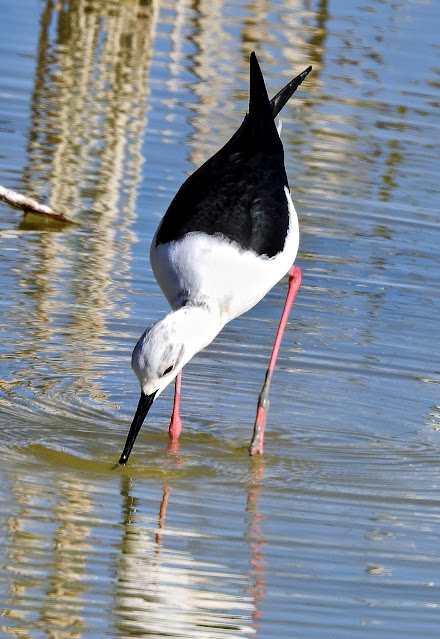The European stonechat (Saxicola rubicola) is a small passerine bird that was formerly classed as a subspecies of the common stonechat. Long considered a member of the thrush family, Turdidae, genetic evidence has placed it and its relatives in the Old World flycatcher family, Muscicapidae.
European stonechats breed in heathland, coastal dunes and rough grassland with scattered small shrubs and bramble, open gorse, tussocks or heather. They are short-distance migrants or non-migratory, with part of the population (particularly from northeastern parts of the range, where winters are colder) moving south to winter further south in Europe and more widely in north Africa.

The stonechat is 11.5–13 cm (4.5–5.1 in) long and weighs 13–17 g (0.46–0.60 oz), slightly smaller than the European robin. Both sexes have distinctively short wings, shorter than those of the more migratory whinchat and Siberian stonechat. The summer male has black upperparts, a black head, an orange throat and breast, and a white belly and vent. It also has a white half-collar on the sides of its neck, a small white scapular patch on the wings, and a very small white patch on the rump often streaked with black. The female has brown upperparts and head, and no white neck patches, rump or belly, these areas being streaked dark brown on paler brown, the only white being the scapular patch on the wings and even this often being buffy-white.
The two subspecies differ in colour intensity following Gloger's rule, with S. r. rubicola paler and with larger white patches in the drier European continental and mediterranean climates, and S. r. hibernans darker brown with less white in the humid Atlantic oceanic climate. They intergrade broadly where their ranges meet, from southeastern England south through France and Spain, and many individuals are not identifiable to subspecies. Extreme examples of S. r. rubicola from the driest southern areas of its range such as the Algarve and Sicily are particularly pale and with a large white rump, and can be very similar to Siberian stonechats in appearance. nDNA microsatellite fingerprinting reveals a very small degree of separation between the two subspecies.
The male's song is high and twittering like a dunnock. Both sexes have a clicking call like stones knocking together.
The European stonechat (Saxicola rubicola) is a small passerine bird that was formerly classed as a subspecies of the common stonechat. Long considered a member of the thrush family, Turdidae, genetic evidence has placed it and its relatives in the Old World flycatcher family, Muscicapidae.
European stonechats breed in heathland, coastal dunes and rough grassland with scattered small shrubs and bramble, open gorse, tussocks or heather. They are short-distance migrants or non-migratory, with part of the population (particularly from northeastern parts of the range, where winters are colder) moving south to winter further south in Europe and more widely in north Africa.
European stonechats first breed when they are one year old. They are monogamous during the breeding season but do not pair for life. The nest is built entirely by the female and is placed in dense vegetation close to the ground. It is a loose unwoven cup of dried grass lined with hair and feathers. The eggs are laid in early morning at daily intervals. The clutch is typically 4–6 eggs, which are pale blue to greenish-blue with red-brown freckles that are more numerous at the larger end. The average size of an egg is 18.7 mm × 14.4 mm (0.74 in × 0.57 in) with a weight of 2.0 g (0.071 oz). They are incubated for 13–14 days by the female beginning after the last egg is laid. Both parents care for and feed the chicks. They are brooded by the female. The nestlings fledge 12–16 days after hatching but continue to be fed by both parents for a further 4–5 days after which the female begins building a new nest for another brood while the male continues to feed the young for another 5–10 days. The parents raise two or three broods in a season.






%203.jpg)




%201.jpg)














%201.jpg)
%202.jpg)












%20%201.jpg)






%201.jpg)



